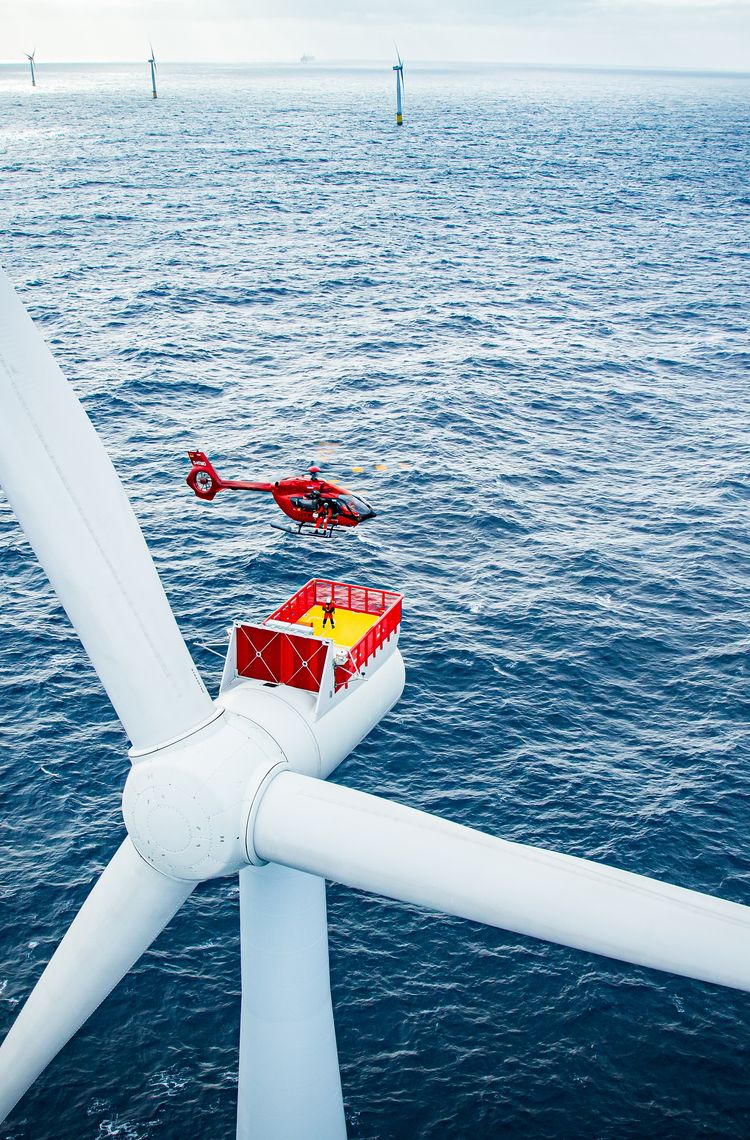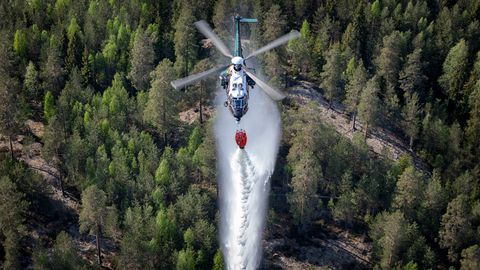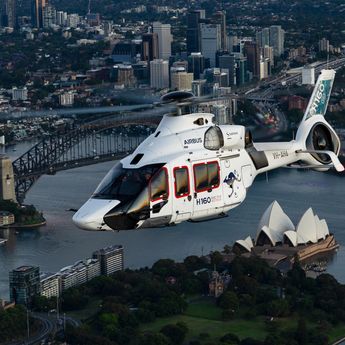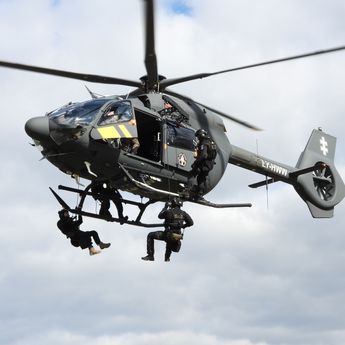In a world-premier trial, Airbus Helicopters and partners teamed up to show that helicopters are an important asset to support floating wind farms.
Foam streaked breaking waves and hoist lines whistled in the wind. Yet the helicopters were stable as the team attempted to land technicians atop a floating wind turbine in the Hywind Tampen wind farm off the coast of Bergen, Norway.
On 12 October, an H135 and an H145, from KN Helicopters and HTM Helicopters respectively, hoisted cargo and two crew members onto the nacelles of - yes, floating wind turbines - and what's more, in the rough autumn conditions (30 knots of wind and sea state 6) they'd set out to test. The day before, they lifted cargo onto the nacelle in almost 50 knots of wind and sea state 6.
It had taken a year to get here. In late 2022, Equinor agreed to hold the trials in Hywind Tampen, a floating wind farm already producing electricity to nearby platforms. Excitement built as the Airbus-led team foresaw data from real-world conditions: weather, air traffic, harsh sea states and the operational turbines’ behaviour.
Stringent precautions
The logistics involved a special permit (Air Operator Certificates) from the Norwegian aviation authority, safety audits, risk assessments and standard operation procedures (SOP), in addition to extensive briefings for all crew members. Having highly experienced flight crews was a must. HTM and KN Helicopters, of Germany and Denmark respectively, both leading providers of helicopter hoist services for the offshore wind industry loaned their pilots for the test flights.
“We’ve been hoisting to bottom-fixed offshore turbines for many years,” says Alain Vigneau, Head of Offshore Wind Market at Airbus Helicopters, regarding Airbus helicopter missions to offshore wind farms. “Now we want to demonstrate a helicopter’s capability in connection to floating turbines.”
And here on this blustery day, they would do just that. Even in the North Sea’s five and a half metre-high waves, conditions were challenging but feasible.
“The limit of what’s possible”
With wind farms moving further from land, the rush is on to install these 250-metre-high floating structures on supports moored to the seabed. Hywind Tampen is a unique set-up using 11 wind turbines 110 NM from shore to generate electricity to power its oil and gas platforms. But how to get a technician to the wind turbines, far from land, when waves and currents make it difficult for marine craft? “The conditions were at the upper limit of what is possible but we proved we could position the technicians on the turbine in a safe and efficient way,” says Bernd Brucherseifer, Managing Director and Pilot at HTM.
With 12 GoPro cameras on the helicopters, an H135 from KN Helicopters hoisted a cargo load onto a nacelle atop turbine No 2. Next, an H145 from HTM hoisted two passengers onto the nacelle of turbine No 2. "Today we showed we could hoist from floating turbines even in high sea states,” says Martin Knudson, Chief Pilot at KN Helicopters.
‘Safely’ is certainly the operative word when assessing how to send technicians to turbines. A helicopter can transfer personnel in higher seas than marine vessels and in less time. “The helicopter is the only reasonable means to deploy personnel in this sea state,” says Christopher Brons-Illing, Senior Engineer Operations at Equinor, one of the trial’s organisers and part of the hoist team. “I’d definitely do it again.” It all adds up to less downtime for the turbines and more active use of technicians’ time – and quite possibly – a sprightlier technician at the end of the trip.
Footage from the cameras, plus motion data from the turbines, are now being analysed and will be shared with the industry to mature standard operating procedures for hoisting to floating turbines. A collective effort that augurs well for this emerging technology for renewable energy production.






